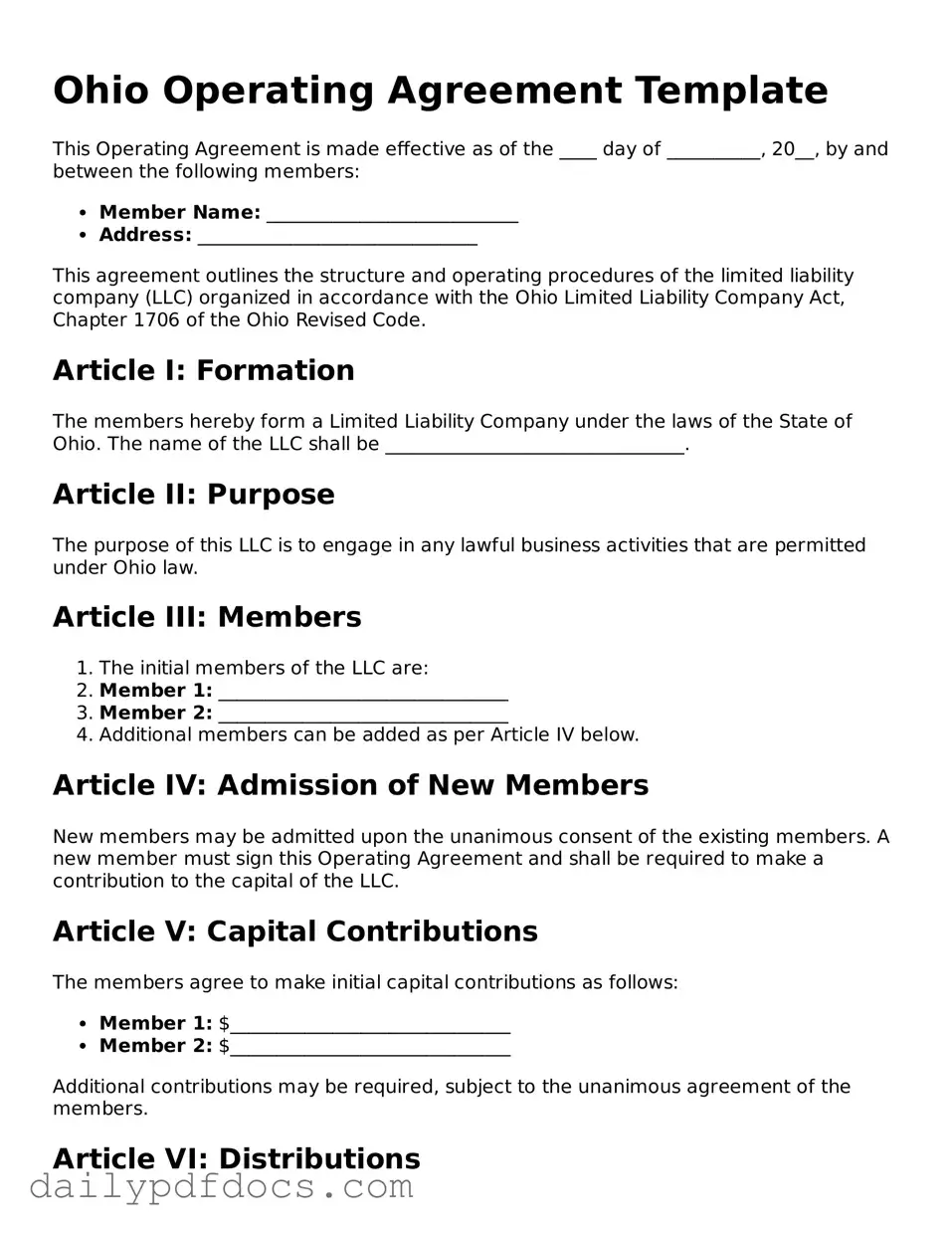Ohio Operating Agreement Template
This Operating Agreement is made effective as of the ____ day of __________, 20__, by and between the following members:
- Member Name: ___________________________
- Address: ______________________________
This agreement outlines the structure and operating procedures of the limited liability company (LLC) organized in accordance with the Ohio Limited Liability Company Act, Chapter 1706 of the Ohio Revised Code.
Article I: Formation
The members hereby form a Limited Liability Company under the laws of the State of Ohio. The name of the LLC shall be ________________________________.
Article II: Purpose
The purpose of this LLC is to engage in any lawful business activities that are permitted under Ohio law.
Article III: Members
- The initial members of the LLC are:
- Member 1: _______________________________
- Member 2: _______________________________
- Additional members can be added as per Article IV below.
Article IV: Admission of New Members
New members may be admitted upon the unanimous consent of the existing members. A new member must sign this Operating Agreement and shall be required to make a contribution to the capital of the LLC.
Article V: Capital Contributions
The members agree to make initial capital contributions as follows:
- Member 1: $______________________________
- Member 2: $______________________________
Additional contributions may be required, subject to the unanimous agreement of the members.
Article VI: Distributions
Profits and losses will be allocated to the members in proportion to their respective capital contributions. Distributions shall be made at least annually, or as otherwise agreed upon by the members.
Article VII: Management
The management of the LLC will be vested in the members. Decisions will require the consent of a majority of the members unless stated otherwise in this Agreement.
Article VIII: Amendments
This Operating Agreement may be amended only with the written consent of all members. Amendments must be documented and attached to this Agreement.
Article IX: Governing Law
This Agreement will be governed and construed in accordance with the laws of the State of Ohio.
Execution
The undersigned members agree to the terms of this Operating Agreement.
Member Signature: _____________________________ Date: ___________
Member Signature: _____________________________ Date: ___________
This Operating Agreement is a crucial document that outlines the operational framework for the LLC. Please ensure all members understand their rights and responsibilities under this Agreement.
